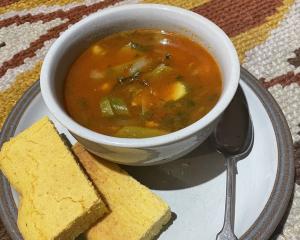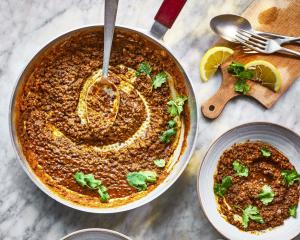David Latt delights in a return to Havana - the Cuban city back on the food map.
Havana is back in the news. For more than half a century, Cuba has been off limits to Americans. With the reopening of the American Embassy in August 2015, tourists are flocking to Havana. The city is bustling with new restaurants, hotels, clubs, bars and paladars, the uniquely Cuban restaurant created in a family's home.
The paladar movement began after the Soviet Union stopped subsidising Cuba in what is called the "Special Period," when the economy suffered greatly. The government experimented with private enterprise and allowed a few private citizens to turn their homes into restaurants.
In 1999, we ate at La Guarida, a paladar on the third floor of a dilapidated building with an auto repair shop on the bottom floor. Walking up the curved staircase, we passed tiny apartments, their doors open to allow for the circulation of air.
Made famous as the location for the classic Cuban film, Strawberries and Chocolate (Fresa y chocolate), La Guarida was a restaurant created inside a small apartment. Customers ate in what had been the living room. Another room had also been cleared of its furniture to make way for a dozen small tables and chairs. Plates of chicken with rice and vegetables were served, and I remember we were charged for bread. All in all, the food was good but not special except that by 1999-Havana-standards, the quality was very good.
Fast forward to 2015 and a return to La Guarida found the restaurant in the same peeling, dilapidated building. Cars were still parked inside the building on the ground floor and the restaurant was still reached by climbing up the broad staircase to the third floor.
But La Guarida no longer looked like a family's apartment. The restaurant now takes up the entire floor with a large kitchen, sleek modern bathrooms and large, expansive rooms decorated with crystal chandeliers and quality paintings. Sitting in any of the dining rooms or the small bar, you could imagine you were in London or New York. The menu no longer has home-cooked favorites such as chicken with rice and vegetables. La Guarida's fine-dining cuisine would be easily found in Paris or Berlin with prices to match.
Like La Guarida, many paladars no longer look like private homes. Paladar Vistamar is in an upscale neighborhood of 1950s modernist houses. Located on the second floor, the restaurant occupies what was once the living room and terrace. The dining areas are framed by a floor-to-ceiling glass wall on the ocean-facing side of the building. Eat outside on the covered terrace and you will have the best view of the ocean and the pool below.
When we had lunch on a sunny, clear day, the ocean still churned from a storm that had passed over the island the night before. Waves crashed against a concrete retaining wall and swept across the pool.
Pork, chicken and rabbit were on the menu, but given the proximity to the ocean, we chose seafood. A red snapper ceviche was fresh and bright. A green salad with freshly cooked shrimp and lobster was beautifully presented, although foreigners were advised to avoid eating leafy greens because of problems with the quality of the water.
On the advice of the waitress, we ordered sides of the delicious, soupy black beans and steamed rice or as they are called here Moors and Christians ("moros y cristianos"). To finish the meal, a light flan with fresh fruit was served as dessert along with cups of Cuban espresso.
A city living in two worlds
For Americans, a stay in Havana always involves conversations about the current state of relations between the two countries and what will happen when the embargo ends.
Walking around the tourist areas of Old Havana (La Habana Vieja), you might be tempted to believe that Cuba has returned to a capitalist culture. That would be a mistake. Havana is a city living in two worlds. In the tourist sections of the city, capitalist-socialism is very much in evidence. Wide boulevards have been recently paved. Hotels are being constructed within sight of José Martí Square in Old Havana.
The other Havana is a few blocks from the neighborhoods visited by foreigners. On those streets, the pavement is potholed and the buildings are in a state of decay. Of course there are beautiful suburbs outside of the Old City and Central Havana. But most of Havana suffers from the effects of poverty and the consequences of the embargo.
Part of a larger complex, El Cocinero is next door to one of Havana's cultural sensations, Fábrica de Cubano Arte, known locally as F.A.C. or Fábrica. An artist collective originally subsidized by the Cuban government, Fábrica is the ultimate hyphenate. Café, art gallery, screening room, lecture space, dance hall and bar, the expansive former peanut oil factory has dozens of rooms that are filled every night by hundreds of young Cubans. When you visit El Cocinero and after you have eaten and enjoyed one of their delicious, light-as-air piña coladas, definitely follow the music to Fábrica where you can dance until 3am.
Since the "Special Period," paladars have blossomed into a subculture and have transformed the Havana culinary scene. Now the paladar is an iconic feature of the new Havana as much as the 1950s American cars that are everywhere in the city.
As you make a shortlist of paladars you must visit on your trip to Havana, Ivan Chef Justo deserves to be at the top of your list along with La Guarida. The handiwork of two chefs who used to cook for Fidel Castro, Ivan Chef Justo is a soulfully curated vision of a traditional paladar. Family photographs line the walls along with portraits of 1950s Hollywood celebrities. Relying on small private farms for their ingredients, Ivan Chef Justo, like many paladars, is pursuing a farm-to-table programme long popular in the United States but new in Cuba.
When we ate at Ivan Chef Justo, we were part of a large party. We were served family style with large platters filling the center of the table. Lobster stew with carrots, mashed yucca, Moors and Christians, roast chicken and, my favorite, roast pork with crispy lacquered skin, were eaten with relish.
During our week-long stay in Havana, we ate most of our meals in paladars. Talking with other travelers, we heard about their favorite paladars and we told them about ours.
If you have friends traveling to Cuba, ask them which paladars they enjoyed and check La Habana online (www.lahabana.com), because the more popular paladars are booked months in advance, email the hotel concierge to request reservations so you don't miss out.
Paladars of Havana:
• El Cocinero Paladar (Calle 26, Vedado, between Calle 11 and 13, +53 7 832 2355)
• Fábrica de Cubano Arte (Calle 26, between Calles 11 and 13, Equina 11, Vedado, +53 7 838-2260)
• Ivan Chef Justo (Aguacate 9, Esquina Chacon, close to the Museum of the Revolution in Old Havana, +53 7 863-9697 and +53 5 343-8540)
• La Guarida (Concordia. No. 418, between Gervasio and Escobar, +53 7 8669047)
• Paladar Vistamar (Avenida 1, 2206, between Calles 22 and 24, Miramar, +53 7 203 8328)
• Rio Mar (Aveneda 3rd and Final # 11, La Puntilla, Miramar, +53 7 209 4838)
- Zester Daily / Reuters Media Express













